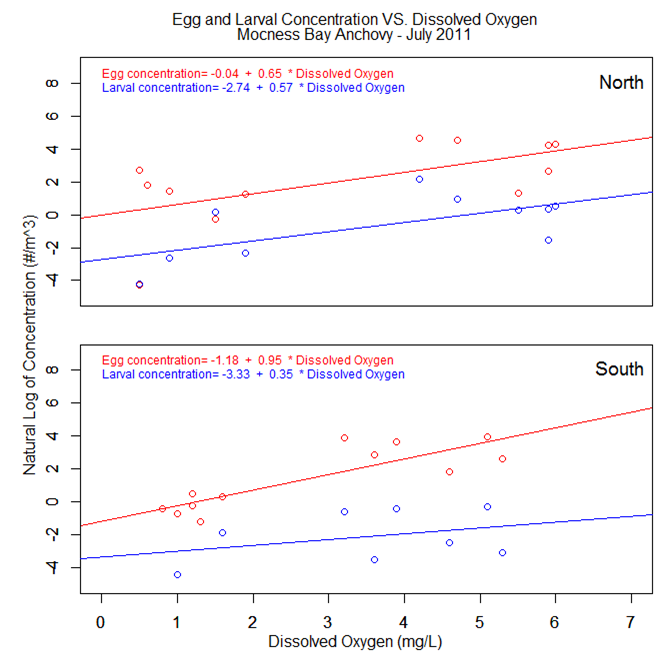Hypoxia in Marine Ecosystems:
Implications for Neritic Copepods
The Project
Low-oxygen waters, often called “dead zones” in coastal ecosystems throughout the world are increasing. Despite these increases, the food-web consequences of low-oxygen waters are poorly understood. Low-oxygen (i.e., hypoxic) bottom waters usually have depressed abundances of copepods compared to normoxic waters.
Our research is aimed at understanding how behavior and fitness of copepods are affected by hypoxia and what the consequences are for pelagic fishes that depend on copepods as a primary food resource. Project objectives are to: 1) analyze changes in migratory behavior and fine-scale depth distribution of copepods with respect to dissolved oxygen level while simultaneously examining the distribution and abundance of their food (phytoplankton and microzooplankton) and predators (fish, gelatinous zooplankton); 2) estimate effects of hypoxia on the “fitness” of copepods using a suite of measurements to develop condition indices of copepods captured at different times and depths in hypoxic and normoxic waters; and 3) evaluate effects of hypoxia on copepod mortality induced directly by hypoxia or by shiftss in predation control by fish and gelatinous zooplankton.
Hypoxic waters may elevate consumption of copepods by jellyfish and depress consumption by pelagic fish. The ongoing research is evaluating copepod distribution and mortality in hypoxic and normoxic waters. Six research cruises were conducted in Chesapeake Bay in 2010 and 2011. The Houde research group has focused its efforts on investigating larval and juvenile fishes, especially the bay anchovy Anchoa mitchilli whose primary food is copepods. Fish were sampled in trawls and plankton nets to determine their abundance, sizes, growth rates, hatch dates, and prey consumption under conditions of hypoxia and normal dissolved oxygen conditions. Preliminary results

Bay Anchovy egg and larval concentration in relation to Dissolved Oxygen (DO) levels at the North and South stations, July 2011.
Importance of the Research
As hypoxia becomes more prevalent in estuarine and continental shelf waters, increased understanding of its effects on planktonic food-webs becomes essential for effective, ecosystem-based management. The proposed research will contribute to development and revision of dissolved oxygen criteria for Chesapeake Bay. Information gained will be critical for food-web modeling and development of fisheries ecosystem plans for Chesapeake Bay.




